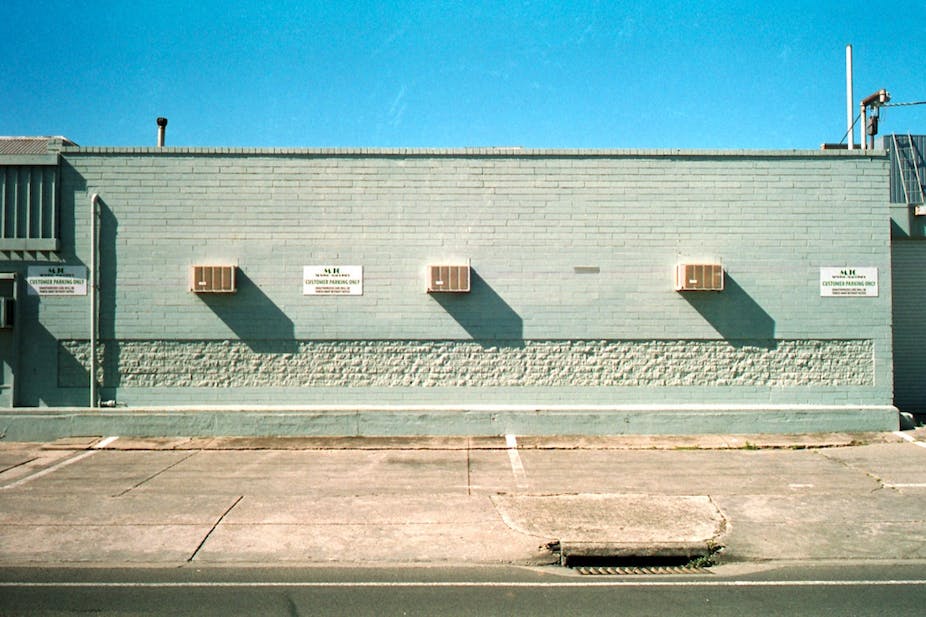This is the year of electricity prices. Everyone, from the Prime Minister to your favourite barista, is talking about the recent rapid escalation in electricity prices.
These increases are a complex story of governments, regulation and an investment program of $42 billion. To put it simply: there is the need to replace ageing assets and to meet safety and reliability standards. But the real bad boy is peak power.
Peak power goes by a few names – peak demand, maximum demand, and critical peak – and is a tale of spikes, unusually hot or cold weather, households, air-conditioning, and capacity.
Peak power occurs when our demand for electricity “spikes”.
Our demand for electricity fluctuates throughout the day depending on whether we are working, sleeping, or doing household activities such washing, cooking, watching TV or using the internet.
Major spikes in demand occur during heat waves and cold snaps when we turn on appliances to cool or warm our homes, workplaces and other spaces. This is our maximum (peak) level of demand for electricity. When temperatures move back to more comfortable levels, our demand for electricity moves back to average levels.
Peak demand compared has been generally growing at a much more rapid rate than average demand, reflecting a doubling in the average new home size and a marked uptake in electrical appliances.
Australian households are estimated to contribute some two-thirds to peak demand levels although households only account for around 25% of total electricity use.
ABS statistics show that nearly 75% of households now use air-conditioning, 57% have a clothes dryer, and more than 80% of households have a home computer.
Spikes in electricity demand occur infrequently - less than 1% of the time or about 40 hours each year. Nevertheless, capacity in generation and networks (poles and wires) is required to meet peak demand. That brings us back to those electricity price increases.
Electricity, unlike other commodities, can’t be stored ready for use. It needs to be available when the switch is turned on. Generation capacity to meet peak demand has been specifically built to meet maximum demand levels (peaking plants).
Our peak demand is more of a problem for the networks which transmit and distribute electricity from the point where it is generated to the end user. Network capacity cannot be quickly increased like peaking plants due to technical limits.
To ensure supply is always available, networks are built to exceed the capacity necessary to meet peak demand. So this means investment decisions to increase network capacity are based on forecasts of our peak demand for electricity.
The primary driver of the recent electricity price increases has been that $42 billion investment in network capacity to meet our forecast peak demand.
The NSW Independent Pricing and Regulatory Tribunal estimates the network cost component of NSW electricity bills has increased by 72% in real terms over the last five years.
To sum up the story so far: Our changing lifestyles have increased our demand for electricity. Our demand peaks when temperatures are unusually high or low, which doesn’t occur very often. We are paying (much higher electricity prices) for increased capacity in the electricity supply system to meet peak demand levels for around 40 hours a year (less than two days).
Putting aside issues like the accuracy of demand forecasts, or the impact of industrial electricity use on demand during peak periods, peak power has a lot to answer for. Around 25% of our electricity bills are for capacity in the system which is needed for less than 1% of time.
So what can we do about it? If we don’t reduce peak demand, what happens to electricity prices?
Three recent government reports have recommended a number of “demand management” measures to reduce peak demand - the Australian Energy Market Commission’s report, Power of Choice, the Productivity Commission’s Electricity Network Regulatory Frameworks, and the report of the Senate Select Committee on Electricity Prices
Some of the proposed measures reduce electricity use across all time periods. Other measures are directed at reducing the peak or shifting the demand for electricity to non-peak periods.
One proposal is for different electricity prices at different times - time-of-use charging (also called cost-reflective pricing) - to discourage electricity use at peak times (the most costly). This is already occurring for large industrial and commercial users.
To be effective, a couple of things are necessary. First, smart meters: these are already available to large business users and some Victorian households. But they come at a cost and have ongoing operating costs. Victorian households have paid more than $700 a meter.
Second, consumers need to be notified in advance of higher prices, which involves other “smart” technologies. Third, households need the capacity to change their electricity use at peak times. Power of Choice acknowledges that households have different “capacities” and some will be unable to adjust their demand and this “could lead to financial distress”.
Another proposal is for “direct load control”. With pre-agreement, your electricity supplier remotely switches off appliances such as air conditioners and swimming pool pumps for, say, 10 minutes every half hour during peak demand periods. To encourage participation, bill credits are usually offered.
Embedded (or distributed) generation is another option. This refers to electricity consumers with on-site generation capacity such standby generators or solar panels. Electricity does not have to be transmitted over distances. So there is less need for more costly network infrastructure but there is the household’s upfront capital and ongoing maintenance costs.
Energy efficiency and more information to consumers are other proposals.
But all these proposals require behavioural change by households. That’s the bottom line. Otherwise, bad boy gets his way and our electricity bills will keep escalating.
See more Explainer articles on The Conversation.

